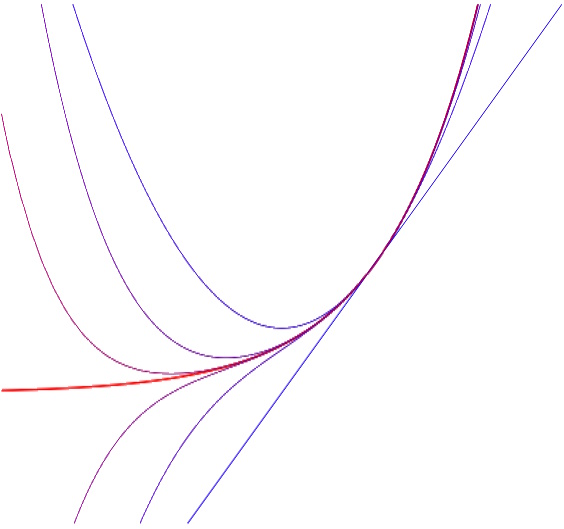\(
%%%%%%%%%%%%%%%%%%%%%%%%%%%%%%%%% Mes commandes %%%%%%%%%%%%%%%%%%%%%%%%%%%%%%%%%%%
\newcommand{\multirows}[3]{\multirow{#1}{#2}{$#3$}}%pour rester en mode math
\renewcommand{\arraystretch}{1.3}%pour augmenter la taille des case
\newcommand{\point}[1]{\marginnote{\small\vspace*{-1em} #1}}%pour indiquer les points ou le temps
\newcommand{\dpl}[1]{\displaystyle{#1}}%megamode
\newcommand{\A}{\mathscr{A}}
\newcommand{\LN}{\mathscr{N}}
\newcommand{\LL}{\mathscr{L}}
\newcommand{\K}{\mathbb{K}}
\newcommand{\N}{\mathbb{N}}
\newcommand{\Z}{\mathbb{Z}}
\newcommand{\Q}{\mathbb{Q}}
\newcommand{\R}{\mathbb{R}}
\newcommand{\C}{\mathbb{C}}
\newcommand{\M}{\mathcal{M}}
\newcommand{\D}{\mathbb{D}}
\newcommand{\E}{\mathcal{E}}
\renewcommand{\P}{\mathcal{P}}
\newcommand{\G}{\mathcal{G}}
\newcommand{\Kk}{\mathcal{K}}
\newcommand{\Cc}{\mathcal{C}}
\newcommand{\Zz}{\mathcal{Z}}
\newcommand{\Ss}{\mathcal{S}}
\newcommand{\B}{\mathbb{B}}
\newcommand{\inde}{\bot\!\!\!\bot}
\newcommand{\Proba}{\mathbb{P}}
\newcommand{\Esp}[1]{\dpl{\mathbb{E}\left(#1\right)}}
\newcommand{\Var}[1]{\dpl{\mathbb{V}\left(#1\right)}}
\newcommand{\Cov}[1]{\dpl{Cov\left(#1\right)}}
\newcommand{\base}{\mathcal{B}}
\newcommand{\Som}{\textbf{Som}}
\newcommand{\Chain}{\textbf{Chain}}
\newcommand{\Ar}{\textbf{Ar}}
\newcommand{\Arc}{\textbf{Arc}}
\newcommand{\Min}{\text{Min}}
\newcommand{\Max}{\text{Max}}
\newcommand{\Ker}{\text{Ker}}
\renewcommand{\Im}{\text{Im}}
\newcommand{\Sup}{\text{Sup}}
\newcommand{\Inf}{\text{Inf}}
\renewcommand{\det}{\texttt{det}}
\newcommand{\GL}{\text{GL}}
\newcommand{\crossmark}{\text{\ding{55}}}
\renewcommand{\checkmark}{\text{\ding{51}}}
\newcommand{\Card}{\sharp}
\newcommand{\Surligne}[2]{\text{\colorbox{#1}{ #2 }}}
\newcommand{\SurligneMM}[2]{\text{\colorbox{#1}{ #2 }}}
\newcommand{\norm}[1]{\left\lVert#1\right\rVert}
\renewcommand{\lim}[1]{\underset{#1}{lim}\,}
\newcommand{\nonor}[1]{\left|#1\right|}
\newcommand{\Un}{1\!\!1}
\newcommand{\sepon}{\setlength{\columnseprule}{0.5pt}}
\newcommand{\sepoff}{\setlength{\columnseprule}{0pt}}
\newcommand{\flux}{Flux}
\newcommand{\Cpp}{\texttt{C++\ }}
\newcommand{\Python}{\texttt{Python\ }}
%\newcommand{\comb}[2]{\begin{pmatrix} #1\\ #2\end{pmatrix}}
\newcommand{\comb}[2]{C_{#1}^{#2}}
\newcommand{\arrang}[2]{A_{#1}^{#2}}
\newcommand{\supp}[1]{Supp\left(#1\right)}
\newcommand{\BB}{\mathcal{B}}
\newcommand{\arc}[1]{\overset{\rotatebox{90}{)}}{#1}}
\newcommand{\modpi}{\equiv_{2\pi}}
\renewcommand{\Re}{Re}
\renewcommand{\Im}{Im}
\renewcommand{\bar}[1]{\overline{#1}}
\newcommand{\mat}{\mathcal{M}}
\newcommand{\und}[1]{{\mathbf{\color{red}\underline{#1}}}}
\newcommand{\rdots}{\text{\reflectbox{$\ddots$}}}
\newcommand{\Compa}{Compa}
\newcommand{\dint}{\dpl{\int}}
\newcommand{\intEFF}[2]{\left[\!\left[#1 ; #2\right]\!\right]}
\newcommand{\intEFO}[2]{\left[\!\left[#1 ; #2\right[\!\right[}
\newcommand{\intEOF}[2]{\left]\!\left]#1 ; #2\right]\!\right]}
\newcommand{\intEOO}[2]{\left]\!\left]#1 ; #2\right[\!\right[}
\newcommand{\ou}{\vee}
\newcommand{\et}{\wedge}
\newcommand{\non}{\neg}
\newcommand{\implique}{\Rightarrow}
\newcommand{\equivalent}{\Leftrightarrow}
\newcommand{\Ab}{\overline{A}}
\newcommand{\Bb}{\overline{B}}
\newcommand{\Cb}{\overline{C}}
\newcommand{\Cl}{\texttt{Cl}}
\newcommand{\ab}{\overline{a}}
\newcommand{\bb}{\overline{b}}
\newcommand{\cb}{\overline{c}}
\newcommand{\Rel}{\mathcal{R}}
\newcommand{\superepsilon}{\varepsilon\!\!\varepsilon}
\newcommand{\supere}{e\!\!e}
\makeatletter
\newenvironment{console}{\noindent\color{white}\begin{lrbox}{\@tempboxa}\begin{minipage}{\columnwidth} \ttfamily \bfseries\vspace*{0.5cm}}
{\vspace*{0.5cm}\end{minipage}\end{lrbox}\colorbox{black}{\usebox{\@tempboxa}}
}
\makeatother
\def\ie{\textit{i.e. }}
\def\cf{\textit{c.f. }}
\def\vide{ { $ {\text{ }} $ } }
%Commande pour les vecteurs
\newcommand{\grad}{\overrightarrow{Grad}}
\newcommand{\Vv}{\overrightarrow{v}}
\newcommand{\Vu}{\overrightarrow{u}}
\newcommand{\Vw}{\overrightarrow{w}}
\newcommand{\Vup}{\overrightarrow{u'}}
\newcommand{\Zero}{\overrightarrow{0}}
\newcommand{\Vx}{\overrightarrow{x}}
\newcommand{\Vy}{\overrightarrow{y}}
\newcommand{\Vz}{\overrightarrow{z}}
\newcommand{\Vt}{\overrightarrow{t}}
\newcommand{\Va}{\overrightarrow{a}}
\newcommand{\Vb}{\overrightarrow{b}}
\newcommand{\Vc}{\overrightarrow{c}}
\newcommand{\Vd}{\overrightarrow{d}}
\newcommand{\Ve}[1]{\overrightarrow{e_{#1}}}
\newcommand{\Vf}[1]{\overrightarrow{f_{#1}}}
\newcommand{\Vn}{\overrightarrow{0}}
\newcommand{\Mat}{Mat}
\newcommand{\Pass}{Pass}
\newcommand{\mkF}{\mathfrak{F}}
\renewcommand{\sp}{Sp}
\newcommand{\Co}{Co}
\newcommand{\vect}[1]{\texttt{Vect}\dpl{\left( #1\right)}}
\newcommand{\prodscal}[2]{\dpl{\left\langle #1\left|\vphantom{#1 #2}\right. #2\right\rangle}}
\newcommand{\trans}[1]{{\vphantom{#1}}^{t}{#1}}
\newcommand{\ortho}[1]{{#1}^{\bot}}
\newcommand{\oplusbot}{\overset{\bot}{\oplus}}
\SelectTips{cm}{12}%Change le bout des flèches dans un xymatrix
\newcommand{\pourDES}[8]{
\begin{itemize}
\item Pour la ligne : le premier et dernier caractère forment $#1#2$ soit $#4$ en base 10.
\item Pour la colonne : les autres caractères du bloc forment $#3$ soit $#5$ en base 10.
\item A l'intersection de la ligne $#4+1$ et de la colonne $#5+1$ de $S_{#8}$ se trouve l'entier $#6$ qui, codé sur $4$ bits, est \textbf{\texttt{$#7$}}.
\end{itemize}
}
\)
- II - Extrema globaux et locaux
- II - Plus de deux variables
- III - Statistique bivarié











